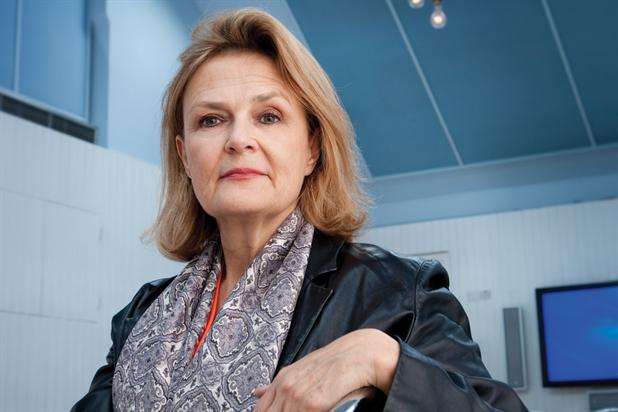With all her relentless energy, tenacity and enthusiasm, it comes as a surprise to hear Kate Robertson admit there’s a big battle she’s struggling to win, and may well lose.
And it’s not the most obvious one. Namely, helping to keep Havas Worldwide – where she has just been promoted to the new role of global co-president – a serious player in a marcoms world being carved up by a handful of supergroups (now even fewer in number after the midsummer marriage of Publicis and Omnicom).
"The biggest problem isn’t scale and hasn’t been so for the past ten years," she asserts. "The need to master the digital space has led to a flat-out war for talent."
She believes the battle for talent is leaving the networks stuck between a rock and a hard place. On one side they are being screwed down by clients who want brilliant creativity and high levels of service for commodity prices. On the other, they’re unable to lock in the best talent that has no loyalty to the industry and chases the fattest pay cheque.
"It doesn’t matter whether those people are on £30,000 a year or £230,000 – you need only be in a job for a few months before you get the chance to earn a lot more cash," she observes. "Once upon a time, creatives would die to work in our business. Now they’re at Google, Yahoo!, Facebook and Twitter, and we’re falling to the back of the pack. It’s not just a talent churn, it’s a vortex."
Robertson, whose demarcation line with Andrew Benett, her US-based counterpart, has yet to be defined, is also under pressure from David Jones, the Havas chief executive, who has made it clear that the network’s digital capabilities are not being developed fast enough. Jones’ plan is for a central function to look after day-to-day digital delivery, while network operations – there are 326 of them, not counting Havas Media – concentrate on innovation. "It’s what clients want, but it’s the hardest of all things to do," Robertson says.
This is all part of Jones’ vision of creating a network that’s a leaner and more flexible alternative to the other leviathans. The change of name from Euro RSCG to Havas Worldwide last year was meant to give a tidier appearance to a disparate operation built through acquisition, and lead to greater creative, media and digital synergy.
"There’s no ‘we’ve always done it this way’ attitude," Robertson claims. "We’ve got an entrepreneurial culture that’s very P&L-focused and very engaged with the digital world and social media. Nobody gets to coast."
The jury is out on whether this will work. Observers point to the lack of a signature account to bond the network globally, as well as the varying quality of the Havas agencies.
Robertson, though, cites the company’s lean and devolved structure – and its youthful collective face: Jones, at 46, is the youngest chief executive of a major marcoms holding company; and Yannick Bolloré, the heir-apparent son of the Havas billionaire chairman, is just 33.
And if Reckitt Benckiser, won seven years ago, is the best the network can muster in terms of a global client – it lost its worldwide Jaguar business in 2011 – BETC’s acclaimed work on Evian is evidence of the creative potency to be found within Havas, Robertson suggests. "Reckitt Benckiser has pulled offices together, and the lack of a global client isn’t really a problem," she adds. "In the old days, these were usually jeans or car brands. Today, it’s Apple or Google. Realistically that isn’t going to happen."
Perhaps the more pressing challenge is selling the Havas offering to clients who may need to be convinced about the group’s long-term future. Vincent Bolloré is said to be ready to sell if the price is right, leading to perpetual speculation that it could be gobbled up by WPP, Interpublic or Dentsu. What’s more, his commitment to Havas continues to be questioned in light of his involvement with Vivendi, Europe’s biggest media and telecoms company (his 5 per cent stake makes him the biggest shareholder, and he is said to be its chairman-in-waiting).
Robertson claims, however, that Bolloré actually provides ongoing reassurance: "He’s been very committed and involved. Also, we’ve not only got a lean management structure, but a very stable one. Of the six UK chief executives I’ve appointed, five have come from within the group."
It’s probably the one area in which Robertson would prefer change and churn were kept to a minimum.
This article was first published on campaignlive.co.uk

